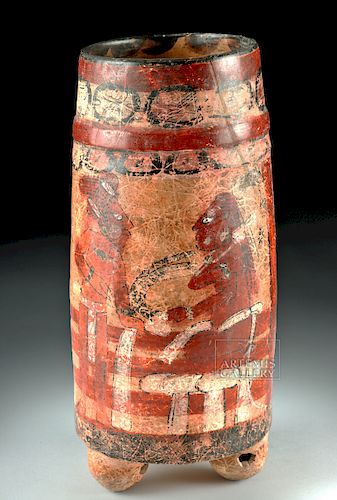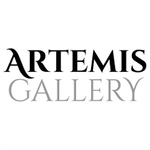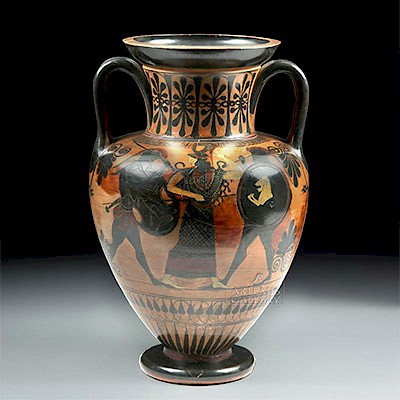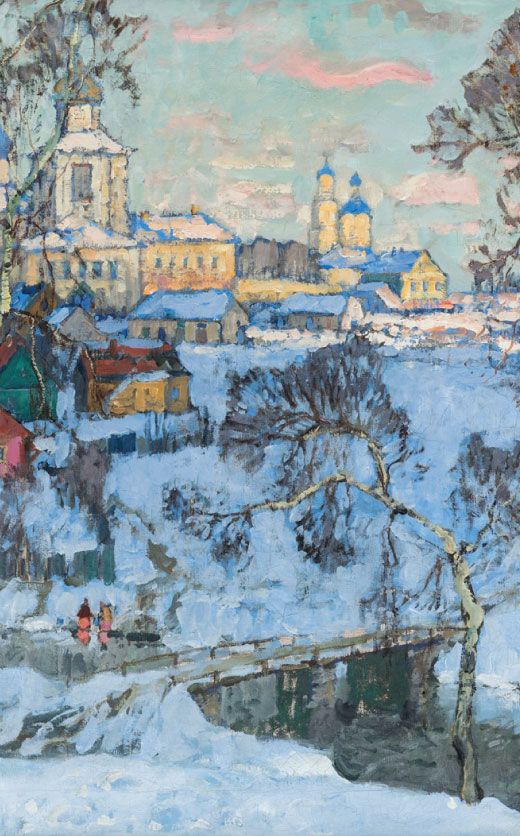Mayan Polychrome Footed Cylinder w/ Cacao Tree
Lot 92
About Seller
Artemis Gallery
686 S Taylor Ave, Ste 106
Louisville, CO 80027
United States
Selling antiquities, ancient and ethnographic art online since 1993, Artemis Gallery specializes in Classical Antiquities (Egyptian, Greek, Roman, Near Eastern), Asian, Pre-Columbian, African / Tribal / Oceanographic art. Our extensive inventory includes pottery, stone, metal, wood, glass and textil...Read more
Estimate:
$14,000 - $18,000
Absentee vs Live bid
Two ways to bid:
- Leave a max absentee bid and the platform will bid on your behalf up to your maximum bid during the live auction.
- Bid live during the auction and your bids will be submitted real-time to the auctioneer.
Bid Increments
| Price | Bid Increment |
|---|---|
| $0 | $25 |
| $300 | $50 |
| $1,000 | $100 |
| $2,000 | $250 |
| $5,000 | $500 |
| $10,000 | $1,000 |
| $20,000 | $2,500 |
| $50,000 | $5,000 |
| $100,000 | $10,000 |
| $200,000 | $20,000 |
About Auction
By Artemis Gallery
Oct 11, 2018
Set Reminder
2018-10-11 10:00:00
2018-10-11 10:00:00
America/New_York
Bidsquare
Bidsquare : Exceptional Antiquities | Ethnographic Art
https://www.bidsquare.com/auctions/artemis-gallery/exceptional-antiquities-ethnographic-art-3500
An important one-day auction featuring museum-worthy examples of classical antiquities, ancient and ethnographic art from cultures encompassing the globe. Artemis Gallery info@artemisgallery.com
An important one-day auction featuring museum-worthy examples of classical antiquities, ancient and ethnographic art from cultures encompassing the globe. Artemis Gallery info@artemisgallery.com
- Lot Description
Pre-Columbian, Mayan, western Belize, Late Classic period, ca. 8th century CE. A beautiful buff earthenware vessel with light orange slip; red, black, white, orange, pink, and gray (once green) paint. This is a distinctive type of polychome vase, specific to Belize, with tripod rattle feet, of which several near identical examples are known. The scene painted in a wide band around its surface depicts a throne room meeting between two males, one seated, presumably the protagonist, and the other standing. The standing male is possibly one of the Hero Twins, and his twin brother on the reverse in the adjacent scene is shown crouching down and coaxing the head of their deceased, decapitated father, the Maize Lord Hunahpu from the base of the cacao tree. Size: 5" W x 11.1" H (12.7 cm x 28.2 cm)
When roasted and ground, cacao beans were mixed into frothy drinks with vanilla, water, chilies, and other seasonings that all Maya people, both elite and common, enjoyed. Residue analysis of vessels like this one has revealed that they were used for consuming the hot chocolate-like drink. Cacao was not just a component of a delicious drink, however - it also played a role in the Mayan creation myth. The Popol Vuh, which tells this tale, tells how the Maize Lord, with the help of his sons, created humans from corn and cacao.
Provenance: ex-private Gill collection, Florida, USA; ex-private Florida, USA collection; ex-collection of Max & Bertha Kofler-Ernl, Riehen, Switzerland, acquired prior to 1970
All items legal to buy/sell under U.S. Statute covering cultural patrimony Code 2600, CHAPTER 14, and are guaranteed to be as described or your money back.
A Certificate of Authenticity will accompany all winning bids.
We ship worldwide and handle all shipping in-house for your convenience.
#138057In very fine condition with several glued and stabilized breaks and stress cracks that are generally difficult to discern, especially from the exterior; some slight losses along crack lines and minor touch up of painted surface. These areas are quite clearly seen and visible around the backside of the seated lord's head and hair, over and across into the cacao tree branches in the scene on the opposite side of the vessel. Excellent root marks on surface.Condition
- Shipping Info
-
All shipping is handled in-house for your convenience. Your invoice from Artemis Gallery will include shipping calculation instructions. If in doubt, please inquire BEFORE bidding for estimated shipping costs for individual items.
-
- Buyer's Premium



 EUR
EUR CAD
CAD AUD
AUD GBP
GBP MXN
MXN HKD
HKD CNY
CNY MYR
MYR SEK
SEK SGD
SGD CHF
CHF THB
THB

















